Lord Howe Island as you’ve never seen it before
Seven dramatic peaks lure walkers to this NSW outpost. And you don’t have to be a mountaineer to tackle them.
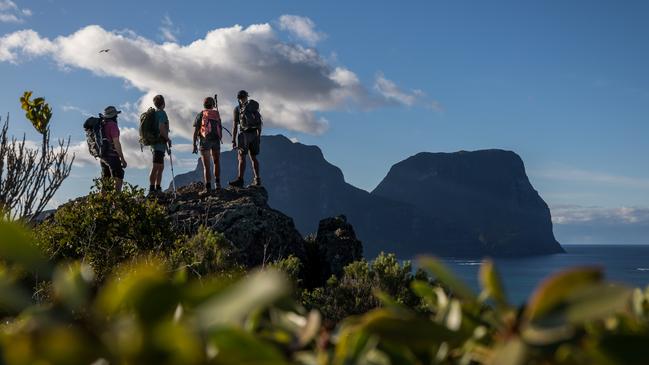
They don’t wear seat belts on Lord Howe Island (no need – not with a 25km/h speed limit) or lock their doors (no crime) or use mobile phones (no signal). Responsibility for upholding the law rests with a single NSW policeman and a springer spaniel named Sebbi, whose job it is to stop rats, snakes and other unwanted visitors arriving from the mainland.
Under his official title of biohazard detection dog, Sebbi gives my backpack a lively sniff as I step off the plane from Sydney. I’m here for the Seven Peaks Walk, five days of guided walking through the island’s dense subtropical palm and pandanus forests, along pristine beaches teeming with seabirds and across ridge lines linking the island’s rugged cliffs and volcanic peaks.
Lying roughly 600km off the NSW coast, the Lord Howe Island group is listed as a UNESCO World Heritage site in recognition of its natural beauty and biodiversity. That means not only keeping snakes and vermin out but carefully managing the impact of tourism on the island, which covers just over 14sq km. There are only 400 bed licences, and visitors must pre-book accommodation.
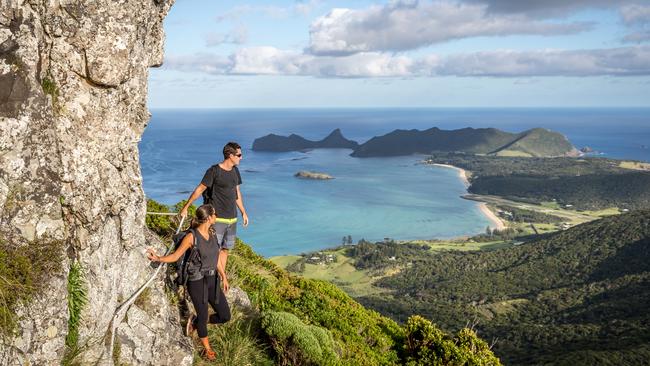
The Seven Peaks Walk is owned and run by Pinetrees Lodge, named TripAdvisor’s No. 1 Hotel in Australia for 2023. The oldest guesthouse on Lord Howe Island, it last changed hands in 1848 for two tonnes of potatoes and has since been run by six generations of the same family. The original lodge has been extended to accommodate up to 75 guests in 31 guestrooms nestled among 160-year-old Norfolk Pines and Kentia palms, the latter a nod to the industry that, for more than a century, exported seeds and seedlings for use in gardens and hotel lobbies around the world. Lord Howe is the only place where Kentias grow naturally. Woodhens, which are also unique to the island, and emerald doves scuttle across the boardwalks, and from the boathouse overlooking the lagoon I can hear muttonbirds cooing from their burrows for supper.
My six companions are veterans of high-end, small-group adventure tours to every corner of the world: the Simpson Desert and the Larapinta Trail in Central Australia; the Kimberley coast; Egypt, India, Iceland and the Antarctic (by Russian icebreaker and helicopter). They have come to Lord Howe Island to enjoy the walking, the scenery and the cooking of executive chef Alasdair Nicolson.
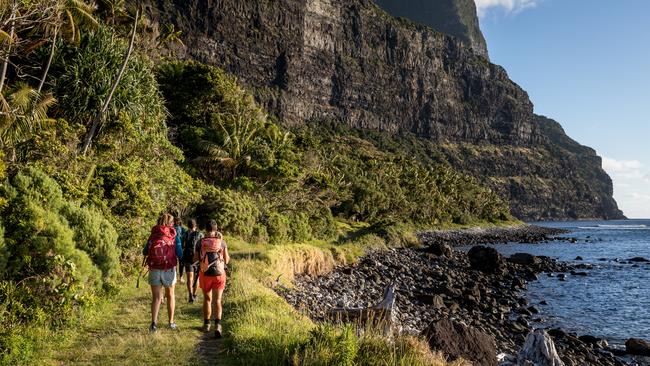
One of the 13 Great Walks of Australia, the Seven Peaks is considered the hardest by vertical distance; climbing all seven means walking a total distance of 45km and scrambling up – and back down – more than 2400m. A moderate level of fitness is enough for six of the seven peaks (the organisers suggest you should be able to walk 10km in three hours and climb 600 steps in 20 minutes) but only the genuinely fit are encouraged to attempt the 875m Mt Gower, the taller of the two monoliths that loom out of the surf at the southern tip of the island.
Climbing Mt Gower requires a licensed guide, a good head for heights and a willingness to pull yourself by rope up the steeper sections. Those who reach the top are rewarded with breathtaking views down the length of the island and, on a clear day, across 20km of open ocean to the jagged shard of Ball’s Pyramid.
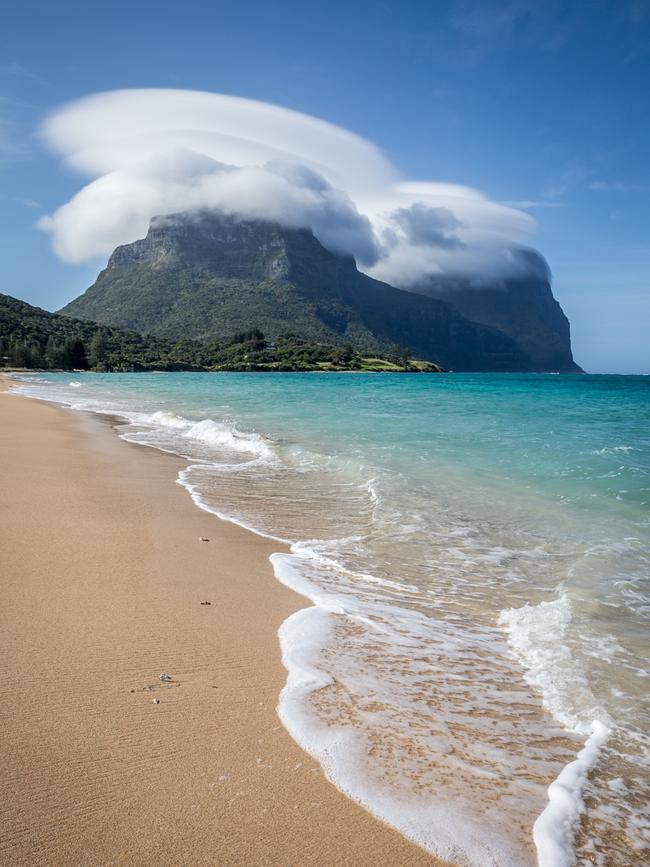
The world’s tallest sea stack is the visible part of an undersea volcano. It juts more than half a kilometre out of the waves and was named after Royal Navy lieutenant Henry Lidgbird Ball, who reported discovering it and nearby Lord Howe Island when his ship, HMS Supply, sailed past on its way to establish a new penal settlement at Norfolk Island in February 1788. Boat operators will take you out to the pyramid, and it’s a popular destination for scuba divers, but landing on the rock is forbidden. As the last haunt of the endangered Lord Howe Island stick insect, it’s important to safeguard the fragile environment.
Conservation is the name of the game here and the NSW government has spent millions ridding the island of rats, as well as feral goats, pigs and cats, in the process saving the flightless woodhen from extinction. The island’s World Heritage listing means all native flora and fauna are protected, but the threat of contamination remains, and boot soles need to be scrubbed and splashed in a fungicide bath before we venture up into the hinterland.
Six hundred steps in 20 minutes sounds like a breeze, even when those steps are loose, slippery and uneven, but a breathless scramble up the side of Malabar Hill soon has one guest, Jeff, reconsidering his decision to climb Mt Gower. A sawtooth ridge line leads to Kim’s Lookout and then to Mt Eliza, on the northwestern tip of the island, where our path to the top is blocked by a colony of sooty terns – more noisy beneficiaries of the rat eradication program.
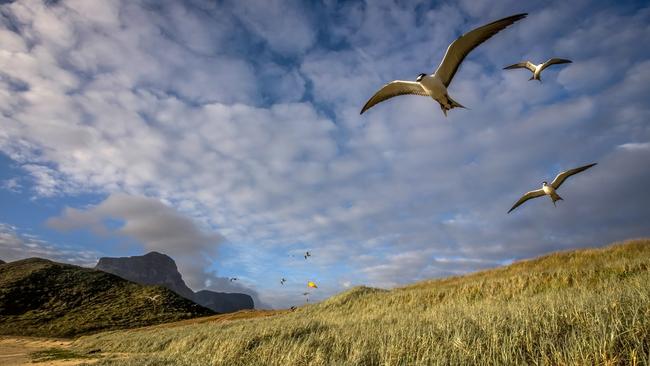
Further round the coast, Dave, another guest and our bird expert, points out a rare pair of bar-tailed godwits, a migratory bird that has been known to fly from Siberia to New Zealand in just nine days. How they landed up here is anyone’s guess.
A hearty packed lunch is more than satisfactory, but the real pay-off comes later with a dinner of panko-crumbed Lord Howe Island trevally and orange and chocolate semifreddo, followed by a platter of Roquefort and Onkaparinga brie. Superb is the verdict around the table.
Day two sees us clambering over rocks and hauling ourselves up ropes to a spot halfway up Mt Lidgbird, another monument to the aforementioned lieutenant. Chris, our laid-back Kiwi guide, herds us on to a rocky ledge enveloped by clouds that dissolve and reform, offering teasing glimpses of the scenery below. A narrow path around the face of the mountain reveals an explosion of scarlet flowers – mountain roses – and a magical view of the pyramid, a witch’s hat in the middle of the Tasman Sea adorned with its own white cloud.
We return to Pinetrees Lodge via Intermediate Hill – its 360-degree views are well worth the climb – in time to see Nicolson give a virtuoso demonstration of his lamb shawarma and Portuguese marinaded tuna. Everything that can’t be caught, grown or reared on Lord Howe has to be brought in fortnightly by boat from the mainland, but a storm heading our way is threatening to delay the supply boat’s arrival by at least a couple of days, maybe more. High winds can also put the airport’s only runway out of action, effectively leaving the island cut off.
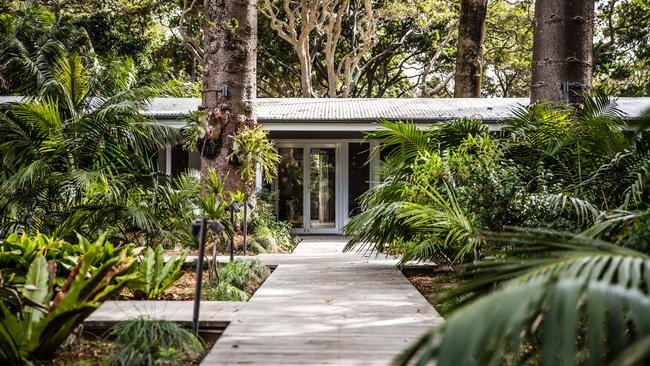
After some weather-enforced rescheduling, we are offered a choice of Mt Gower, now definitely off Jeff’s bucket list, or an off-track walk through palm and pandanus forest in the company of 77-year-old Gilly, whose great-great-grandfather was an American whaler. Dave and his daughter, Jess, choose Mt Gower while the rest of us head off with Gilly, who as a young “seeder” used to shimmy up Kentia palm trees and lug a hessian sack full of seeds over the mountains on his back. He still looks fit enough to do it today.
Gilly’s track, which he cut himself, takes us down to the coast at Boat Harbour, a remote boulder-strewn inlet where, legend has it, shipwrecked sailors buried a chest of gold coins they were unable to find when they came back. From here we follow an undulating coastal path to the bird sanctuary of Muttonbird Point, where we stand and gaze at the seabirds riding the ocean thermals.
With the bad weather closing in, and tour operators pulling their boats out of the water to escape the storm, Chris gets us out early the next morning to kayak across the lagoon to Blackburn Island. There is just time to go snorkelling on the reef – the southernmost coral in the Pacific – before the sky darkens and the wind picks up. Stingrays, crayfish and a pensive Galapagos whaler shark keep us honest as thick clouds smother Mt Gower. Over a dinner of chargrilled king prawns, Lord Howe Island kingfish and miso-glazed duck breast, two of our companions agree the coral is as good as anything they have seen on the Great Barrier Reef.
Overnight the storm hits, lashing the island and stripping leaves from the Norfolk pines, which clatter down on the roof. With no more peaks to climb, Chris fetches the keys to the minivan. The weather rules out serious walking but it’s perfect for a leisurely visit to another attraction: the Lord Howe Island brewery.
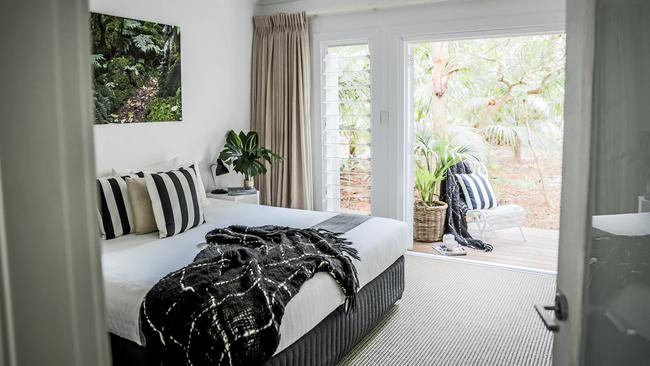
In the know
The six-day Seven Peaks Walk operates April-May and September-November; from $5159 a person, twin-share, excluding flights. Included are guided walking, boat and/or snorkelling trips; six nights’ accommodation at Pinetrees Lodge; full breakfasts, lunches, afternoon teas and four-course dinners. Only 30 per cent of Seven Peaks walkers attempt Mt Gower, which is not part of the program and costs an extra $200.
There is no wi-fi at Pinetrees but there is a courtesy landline and wi-fi is available at some businesses in the village.
FOR MORE STORIES ON AUSTRALIA, CLICK HERE.
Tom Gilling was a guest of Great Walks of Australia.

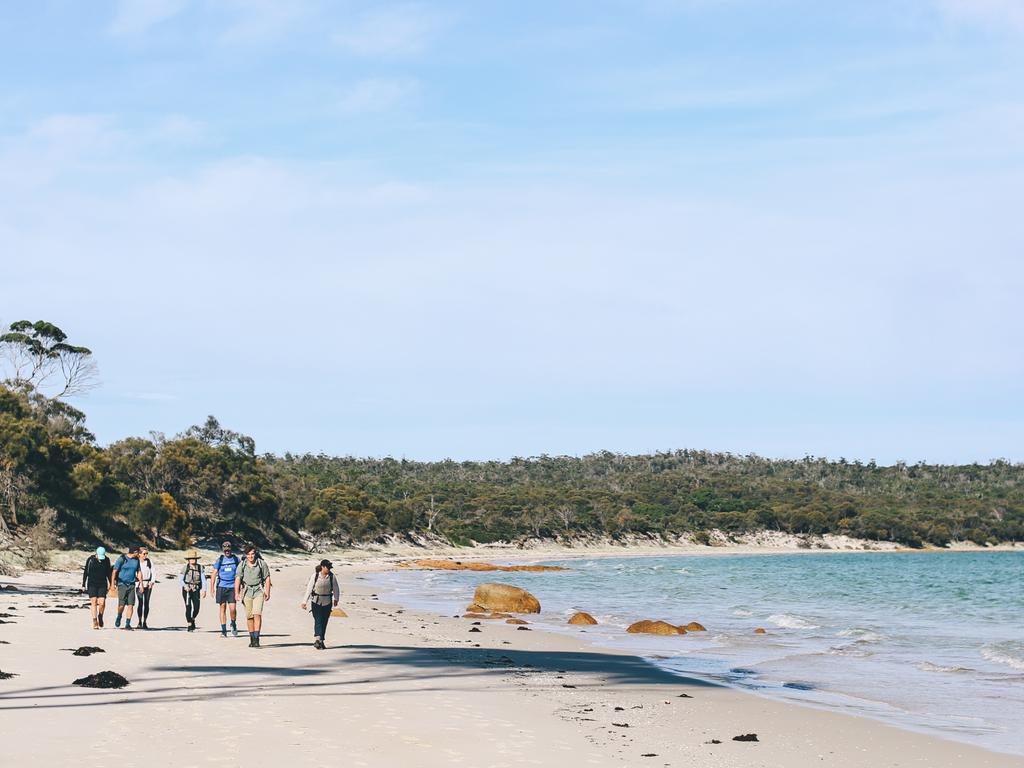
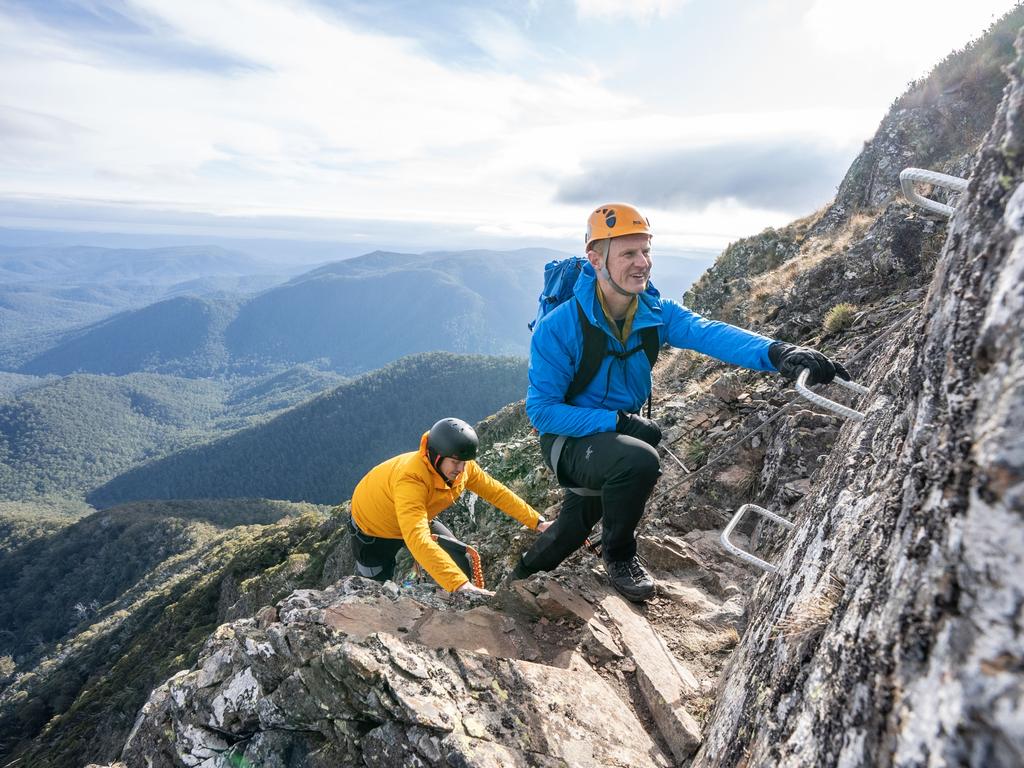
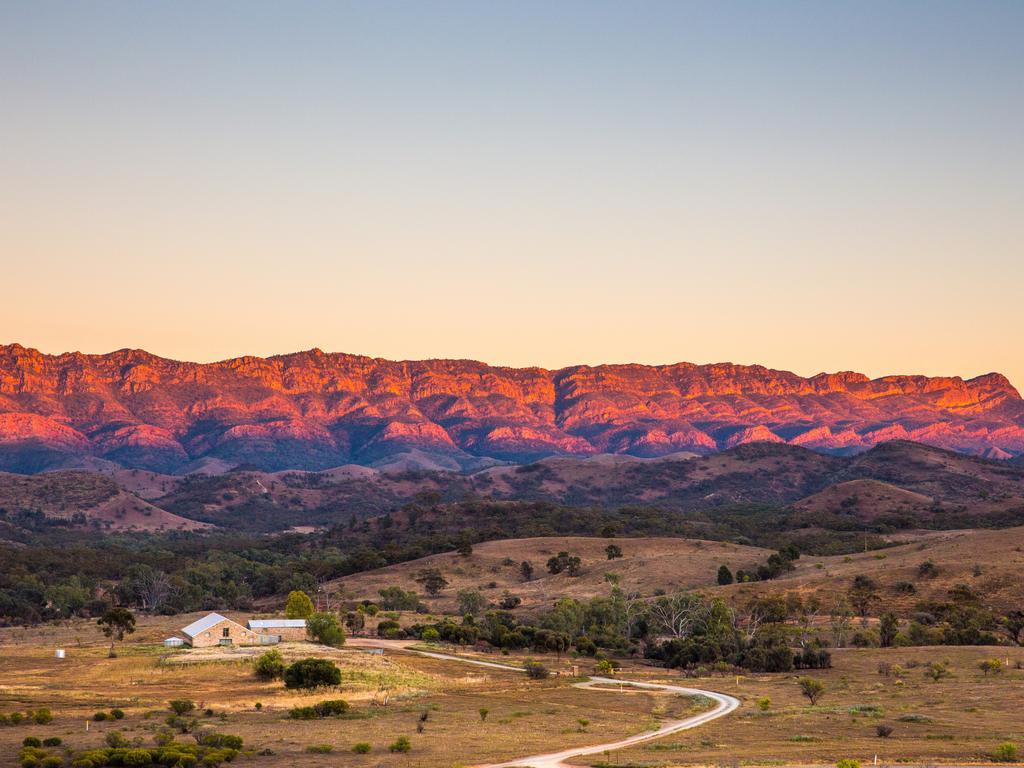
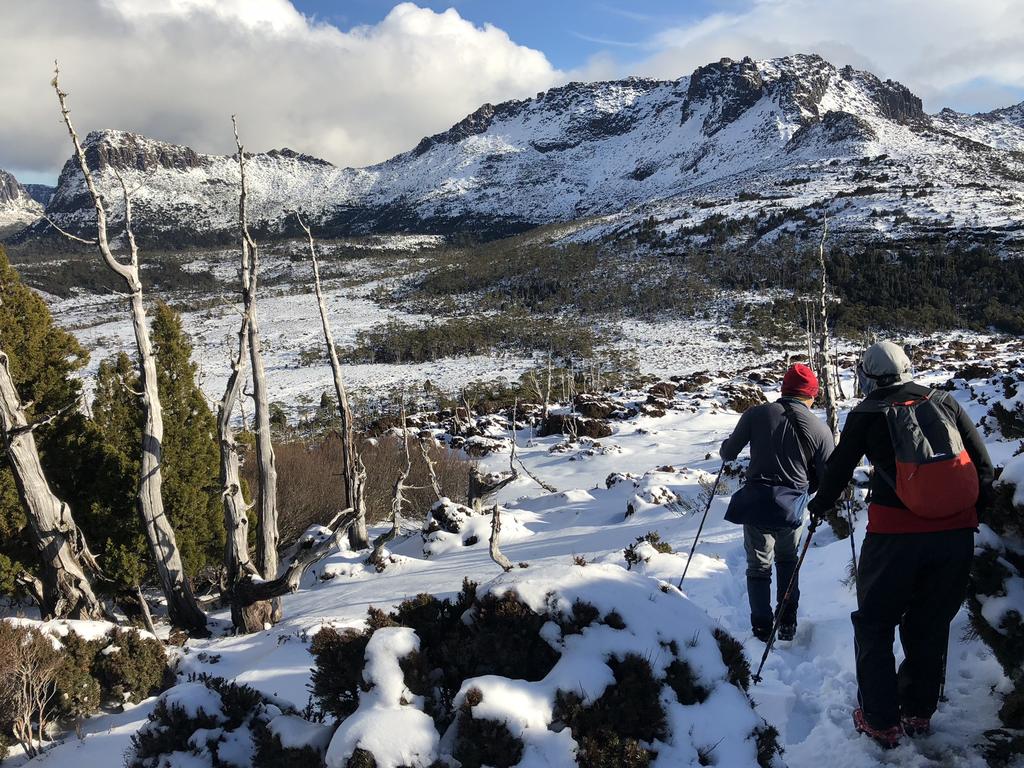
To join the conversation, please log in. Don't have an account? Register
Join the conversation, you are commenting as Logout